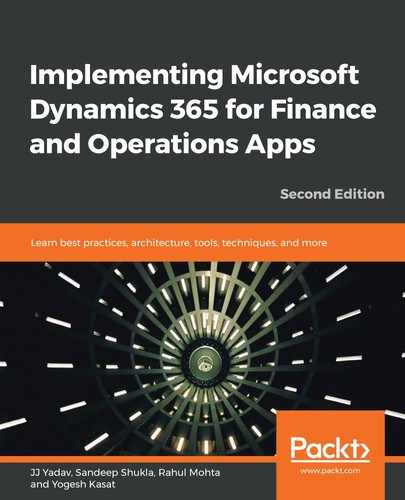The Dynamics 365 for Finance and Operations architecture is built for the cloud, which is the recommended and preferred option of deployment. Cloud deployment uses Microsoft Azure, managed by Microsoft, as the cloud platform. The following diagram shows an example of the production environment deployment architecture:

To understand the diagram, let's walk through the image from left to right, and explore the various components and their roles, as follows:
- Client devices: Client devices such as workstation computers, tablets, and mobile devices connect Finance and Operations through the web browser or mobile apps. Other applications, such as Office 365, Power Apps, Power BI, and Dynamics 365 applications, can connect Finance and Operations data using Open Data Protocol (OData) or via Common Data Service (CDS) and Azure Data Lake Storage Gen2.
- Azure Traffic Manager: Azure Traffic Manager is used for Domain Name System (DNS) resolution and Azure region identification. It also redirects to remote Azure data centers in disaster recovery scenarios.
- Azure Load Balancer: An Azure load balancer provides a higher level of availability by spreading incoming requests across multiple nodes.
- Azure AD: Azure AD provides identity management and authentication for Finance and Operations. Optionally, you can use Azure sync to sync identities from your on-premises AD.
- Windows server container nodes: All core application components, such as Application Object Server (AOS), batch server, retail server, reporting services, management reporter, and many others, are deployed as Windows Server container nodes. Container nodes are deployed in high availability (HA) mode (at least two in the availability set), and can be scaled out based on demand.
- Data layer: Finance and Operations uses Azure SQL Database for transaction workload and Azure Blob Storage to store files. Optionally, master and transaction data can be synced to the customer's own CDS and Azure Data Lake Storage Gen2 environments.
This architecture diagram is just an example to help you understand the architecture; your actual deployment design will vary according to your resources and requirements.
